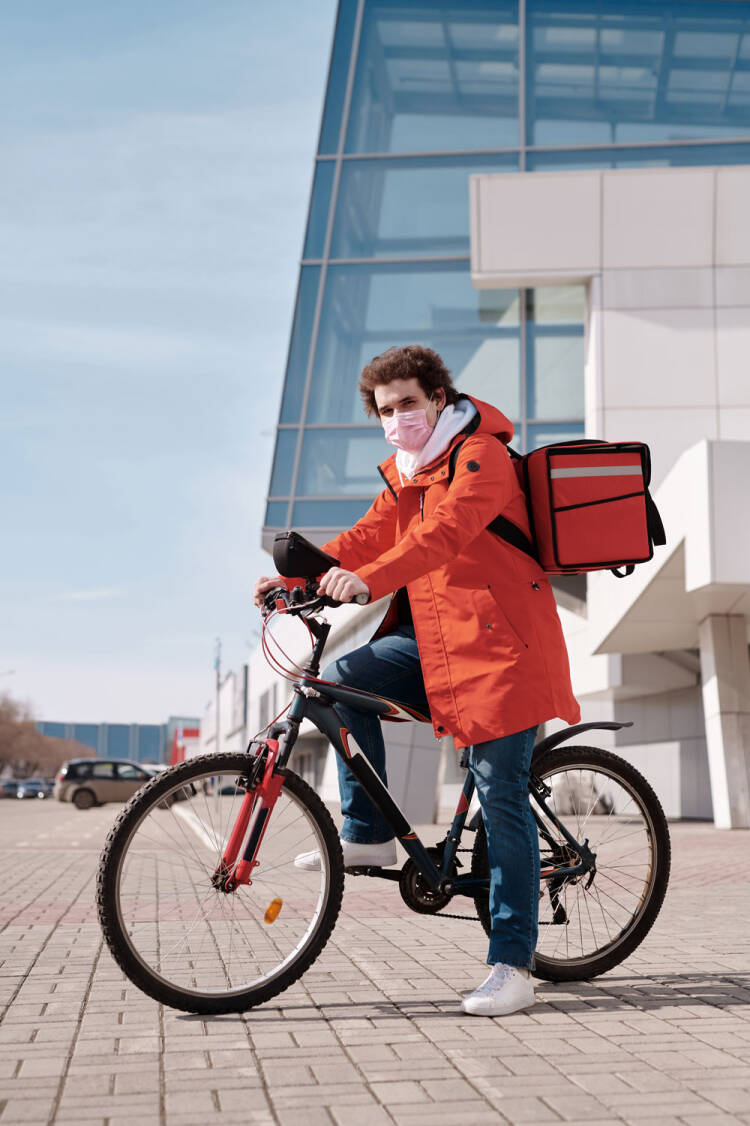© Distinctive Action
© Vespertine
© Vespertine
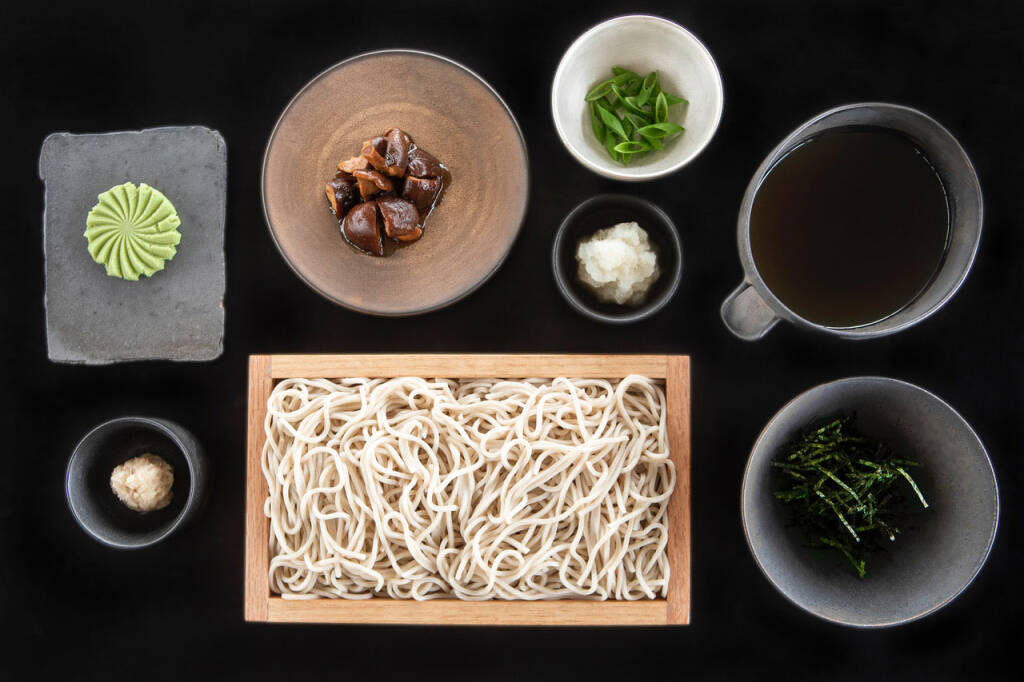
Virtual is personal
Food delivery, especially through third parties, is an impersonal affair. But it doesn’t have to be. A delivery driver is the closest thing you have to a waiter, serving a distant table. There is an opportunity to deliver more than just the food. Even with contactless delivery consider taking tableside service virtual. Perhaps a call or personalized message informing guests their meal is on the way, with some advice on table setting or drink pairing, a detailed explanation of sourcing and flavor combinations, or even suggestions for ambiance. Anything a server is expected to do without having to be physically present can be done virtually. A step up could be using advanced technology to create a virtual restaurant environment. Panera partnered with M7 Innovations and Facebook and Snapchat to provide users with an augmented reality breakfast through special camera filters. Add a touch of real food to the mix and you’re well on your way to a different, but authentic, restaurant experience.
“The bag and box your food comes in is just as much part of the meal as the food itself”
“How does hospitality work without a dine in experience?”
Make-away
Top chefs around the world are pioneering a hybrid model of meal kit and signature dish. When you receive your delivery order, all the critically complicated steps are already done. What remains are a few finishing touches too sensitive to survive delivery. Joris Bijdendijk, of two Michelin star restaurant RIJKS in Amsterdam, is one chef choosing this make-away concept. Through instructional videos, he guides guests through the final stages of meal preparation and plating. Not only do you get to enjoy a Michelin star meal at a fraction of the usual price, you get to feel like a chef at the same time. While this type of service is popular with high end restaurants usually offering complicated arrangements, it can also work with relatively simple dishes, sometimes to even greater effect, because it can empower a customer to add their own creativity. London’s Tata Eatery, for example, is famed for its katsu sando, a Japanese fried pork sandwich that only has a few ingredients. During the pandemic, guests can order their own katsu sando kits via the eatery’s Instagram page and pick up their bundle of exclusive ingredients the next day.
Be human
The most important takeaway for creating a good and memorable hospitality experience at a distance is to be human. Show your guests the heart and soul of your business in creative ways, without being physically close. Make that connection that everyone looking for more than a simple meal is searching for. And be aware that not everyone is looking for the same thing from their meal or delivery style. Easily accessible food delivery has widened the audience considerably and sometimes they just want an amazing meal. If you can give them that, and make it memorable, then your future looks bright.

Packaging is more than a container
The bag and box your food comes in is just as much part of the meal as the food itself. Cheap disposables may be efficient but they don’t leave much of an impression, and certainly don’t make guests feel valued. The packaging is the perfect vehicle for communicating sustainability, and an essential part of your messaging. Even if your food is made from the finest sustainably sourced local ingredients, that message is entirely wasted if the food comes in a simple styrofoam box. It may even be a good idea to move away from disposables entirely and using ‘real’ tableware. That also serves as a solid incentive for repeat orders. On your next order the driver takes the tableware back, and the guest might get a good discount out of the deal. On the other end of the spectrum are things like the #INVISIBLEBAG by Hong Kong’s Distinctive Action. At first glance, it’s a plastic bag like any other, except it’s not plastic at all, and is completely water soluble and environmentally safe. You can run it under hot water and it literally disappears. Not only is that extremely convenient, it’s also a little science experiment that offers some engagement. Also, since it requires hot water, it’s theoretically safe for rainy days, though you might not want to test that just in case.

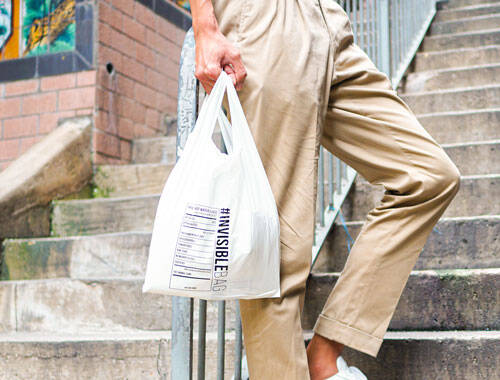
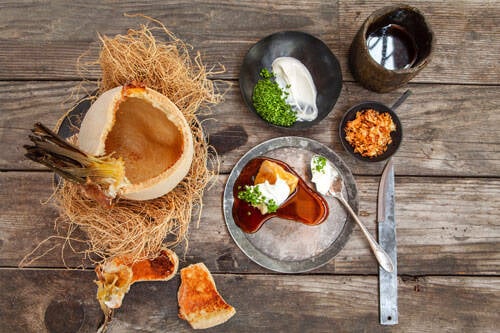
Designing the delivery dish
The more things change, the more they stay the same. More than ever before your food needs to be of impeccable quality. It’s the single most important arbiter that determines whether a customer will consider coming back or decide to stay away. With every other element of a restaurant experience stripped away, mediocre food will diminish success. In addition, a dish that excels in a restaurant setting might be ill-suited to delivery. Not every dish carries well. That doesn’t have to be a limiting factor, however. In Los Angeles, high end experimental tasting menu temple Vespertine pivoted from 300 dollar sit-in experiences on exploring the boundaries of food and art to family style meals meant for sharing, available for pick-up and delivery. The quality is equally high, but the price point is more accessible (around 65 dollar) and the flavors and atmosphere fill a dire need for comfort food. So yes, you can tailor your menu and make stunning dishes designed for delivery. Alternatively, you can decide to ask a little more of your guests, and take advantage of a new avenue of engagement.


“You can tailor your menu and make stunning dishes designed for delivery, or you can decide to ask a little more of your guests, and take advantage of a new avenue of engagement”
The human element
Human interaction is fundamental to foodservice. Not just with friends, family, or loved ones we’re taking out to eat, but the interaction with staff, the surroundings, and the many elements that make up the heart and soul of a restaurant. In the new age of delivery most of those are either gone or greatly diminished. In fact, while the pandemic rages on, taking the human element out of our food experience has morphed into a strange point of pride for many businesses. With online ordering and contactless delivery, all that’s left of a restaurant’s unique signature is the food. It’s an environment that’s almost anathema to hospitality and as such represents an interesting new set of challenges.
Jelle Steenbergen Xiao-Er Kong
At this point enough has been said about the meteoric rise of food delivery, the unstoppable advance of Ghost Kitchens, and the changing face of foodservice. The numbers seem clear on how fast delivery is becoming the new normal. The big question that then rises is: ‘how does hospitality work without a dine in experience?’ Let’s find out.

Making the contactless experience memorable
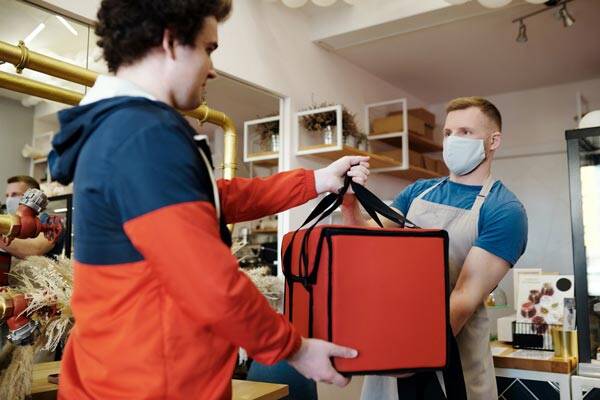
Hospitality in delivery
4 min
TRENDWATCH
HOSPITALITY IN DELIVERY


© Distinctive Action
© Vespertine
Virtual is personal
Food delivery, especially through third parties, is an impersonal affair. But it doesn’t have to be. A delivery driver is the closest thing you have to a waiter, serving a distant table. There is an opportunity to deliver more than just the food. Even with contactless delivery consider taking tableside service virtual. Perhaps a call or personalized message informing guests their meal is on the way, with some advice on table setting or drink pairing, a detailed explanation of sourcing and flavor combinations, or even suggestions for ambiance. Anything a server is expected to do without having to be physically present can be done virtually. A step up could be using advanced technology to create a virtual restaurant environment. Panera partnered with M7 Innovations and Facebook and Snapchat to provide users with an augmented reality breakfast through special camera filters. Add a touch of real food to the mix and you’re well on your way to a different, but authentic, restaurant experience.
“The bag and box your food comes in is just as much part of the meal as the food itself.”
Make-away
Top chefs around the world are pioneering a hybrid model of meal kit and signature dish. When you receive your delivery order, all the critically complicated steps are already done. What remains are a few finishing touches too sensitive to survive delivery. Joris Bijdendijk, of two Michelin star restaurant RIJKS in Amsterdam, is one chef choosing this make-away concept. Through instructional videos, he guides guests through the final stages of meal preparation and plating. Not only do you get to enjoy a Michelin star meal at a fraction of the usual price, you get to feel like a chef at the same time. While this type of service is popular with high end restaurants usually offering complicated arrangements, it can also work with relatively simple dishes, sometimes to even greater effect, because it can empower a customer to add their own creativity. London’s Tata Eatery, for example, is famed for its katsu sando, a Japanese fried pork sandwich that only has a few ingredients. During the pandemic, guests can order their own katsu sando kits via the eatery’s Instagram page and pick up their bundle of exclusive ingredients the next day.
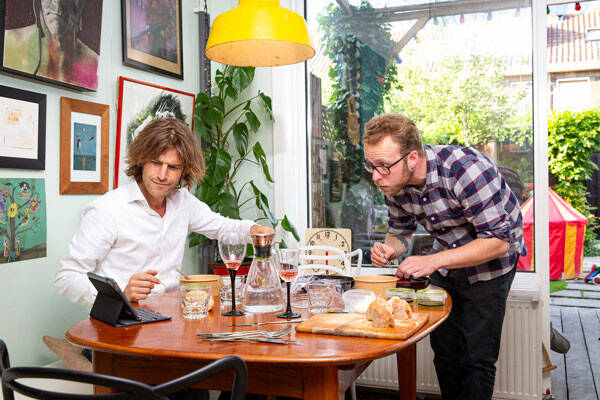
“How does hospitality work without a dine in experience?”
Be human
The most important takeaway for creating a good and memorable hospitality experience at a distance is to be human. Show your guests the heart and soul of your business in creative ways, without being physically close. Make that connection that everyone looking for more than a simple meal is searching for. And be aware that not everyone is looking for the same thing from their meal or delivery style. Easily accessible food delivery has widened the audience considerably and sometimes they just want an amazing meal. If you can give them that, and make it memorable, then your future looks bright.
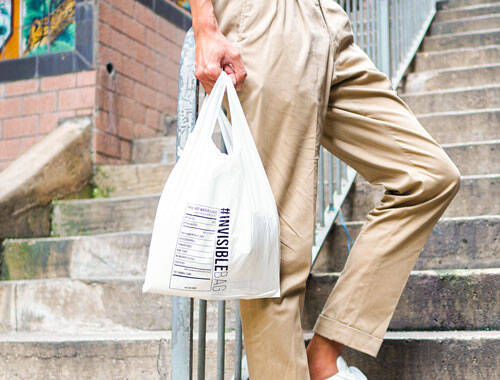
Packaging is more than a container
The bag and box your food comes in is just as much part of the meal as the food itself. Cheap disposables may be efficient but they don’t leave much of an impression, and certainly don’t make guests feel valued. The packaging is the perfect vehicle for communicating sustainability, and an essential part of your messaging. Even if your food is made from the finest sustainably sourced local ingredients, that message is entirely wasted if the food comes in a simple styrofoam box. It may even be a good idea to move away from disposables entirely and using ‘real’ tableware. That also serves as a solid incentive for repeat orders. On your next order the driver takes the tableware back, and the guest might get a good discount out of the deal. On the other end of the spectrum are things like the #INVISIBLEBAG by Hong Kong’s Distinctive Action. At first glance, it’s a plastic bag like any other, except it’s not plastic at all, and is completely water soluble and environmentally safe. You can run it under hot water and it literally disappears. Not only is that extremely convenient, it’s also a little science experiment that offers some engagement. Also, since it requires hot water, it’s theoretically safe for rainy days, though you might not want to test that just in case.

Designing the delivery dish
The more things change, the more they stay the same. More than ever before your food needs to be of impeccable quality. It’s the single most important arbiter that determines whether a customer will consider coming back or decide to stay away. With every other element of a restaurant experience stripped away, mediocre food will diminish success. In addition, a dish that excels in a restaurant setting might be ill-suited to delivery. Not every dish carries well. That doesn’t have to be a limiting factor, however. In Los Angeles, high end experimental tasting menu temple Vespertine pivoted from 300 dollar sit-in experiences on exploring the boundaries of food and art to family style meals meant for sharing, available for pick-up and delivery. The quality is equally high, but the price point is more accessible (around 65 dollar) and the flavors and atmosphere fill a dire need for comfort food. So yes, you can tailor your menu and make stunning dishes designed for delivery. Alternatively, you can decide to ask a little more of your guests, and take advantage of a new avenue of engagement.


“You can tailor your menu and make stunning dishes designed for delivery, or you can decide to ask a little more of your guests, and take advantage of a new avenue of engagement.”
The human element
Human interaction is fundamental to foodservice. Not just with friends, family, or loved ones we’re taking out to eat, but the interaction with staff, the surroundings, and the many elements that make up the heart and soul of a restaurant. In the new age of delivery most of those are either gone or greatly diminished. In fact, while the pandemic rages on, taking the human element out of our food experience has morphed into a strange point of pride for many businesses. With online ordering and contactless delivery, all that’s left of a restaurant’s unique signature is the food. It’s an environment that’s almost anathema to hospitality and as such represents an interesting new set of challenges.
Up until a couple of years ago the most common form of food delivery was the traditional model where consumers would place their order at their local pizza parlor after which their order would be brought to the door by the restaurant's own delivery staff. But since a couple of years platform-to-consumer delivery has increased in popularity.
Jelle Steenbergen Xiao-Er Kong
At this point enough has been said about the meteoric rise of food delivery, the unstoppable advance of Ghost Kitchens, and the changing face of foodservice. The numbers seem clear on how fast delivery is becoming the new normal. The big question that then rises is: ‘how does hospitality work without a dine in experience?’ Let’s find out.

Making the contactless experience memorable
Hospitality in delivery
4 min
